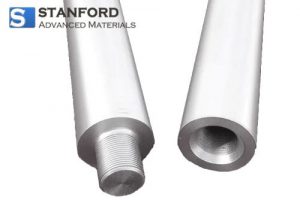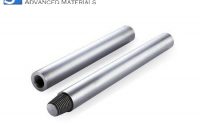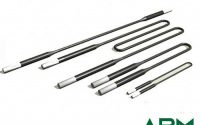Molybdenum Electrodes in Electrochemical Reactions
Introduction
In the evolving landscape of electrochemistry, molybdenum electrodes have emerged as pivotal components, revolutionizing the efficiency and sustainability of electrochemical reactions. Their unique blend of electrical, chemical, and physical properties positions them as exceptional catalysts, driving advancements in energy conversion, storage technologies, and environmental remediation.

This article delves into the characteristics of molybdenum electrodes, their applications in various electrochemical processes, and the future directions of this promising technology.
Unveiling the Properties of Molybdenum Electrodes
Molybdenum, a transition metal, is renowned for its high electrical conductivity, exceptional corrosion resistance, and a melting point that towers over most metals, making it an ideal candidate for challenging electrochemical environments. These properties not only ensure efficient electron transfer, crucial for catalyzing reactions, but also afford the electrodes remarkable durability and operational stability under extreme conditions.
- Electrical Conductivity: Molybdenum’s superior conductivity is fundamental for its role in electrochemical reactions, facilitating swift electron movements that are essential for the catalytic process.
- Corrosion Resistance: Its robustness against corrosion, even in acidic or alkaline environments, preserves the electrode’s integrity and prolongs its service life, a critical attribute for continuous industrial processes.
- High Melting Point: The metal’s resilience at high temperatures guarantees performance stability in applications demanding intense heat, further broadening its utility scope.
- Catalytic Activity: While inherently catalytic to some extent, molybdenum’s effectiveness is significantly enhanced through alloying or surface treatment, tailoring its activity for specific electrochemical reactions.
Related reading: Molybdenum Electrodes For Glass Furnaces
Transformative Applications in Electrochemistry
The incorporation of molybdenum electrodes has led to breakthroughs in various sectors, underscoring their versatility and effectiveness.
- Hydrogen Production: A standout application is in water electrolysis for hydrogen generation. Molybdenum electrodes accelerate the hydrogen evolution reaction (HER), a cornerstone process in producing clean hydrogen fuel. Their efficiency and durability support the vision of sustainable and green hydrogen as a cornerstone of future energy systems.
- Energy Storage and Conversion: In the realm of renewable energy, these electrodes find critical use in batteries and fuel cells. They contribute to the enhancement of redox reactions, pivotal for energy conversion and storage, thereby playing a vital role in the development of more reliable and efficient energy storage solutions.
- Environmental Remediation: Leveraging their catalytic and corrosion-resistant properties, molybdenum electrodes are employed in the electrochemical treatment of wastewater and air purification. They effectively degrade pollutants, offering a potent solution to environmental challenges.
- Chemical Synthesis: The electrodes are also instrumental in the electrochemical synthesis of chemicals, including organic compounds and pharmaceuticals. Their catalytic capabilities enable more sustainable and cost-effective production processes, minimizing the environmental footprint of chemical manufacturing.
Future Directions and Innovations
The journey of molybdenum electrodes is far from complete, with ongoing research aimed at pushing the boundaries of their catalytic performance and application potential. Innovations focus on developing molybdenum-based alloys and composites that exhibit enhanced catalytic properties, optimizing electrode designs to increase active surface areas, and exploring novel surface treatments to boost reaction rates.
One promising area of development is the nanostructuring of molybdenum electrodes. Nanostructured surfaces can significantly increase the number of active sites available for reactions, dramatically improving efficiency. Additionally, the integration of molybdenum with other catalytically active materials could lead to synergistic effects, further enhancing catalytic performance in specific reactions.
The sustainability aspect of molybdenum electrodes also garners attention, with efforts to ensure that the materials and processes involved in their production and deployment minimize environmental impact. This includes the exploration of recycling and recovery methods for molybdenum and associated materials, reinforcing the commitment to sustainable practices across their lifecycle.
Conclusion
Molybdenum electrodes are at the forefront of catalyzing a shift towards more efficient, sustainable, and versatile electrochemical technologies. Their unique properties—ranging from high conductivity and corrosion resistance to exceptional thermal stability—make them indispensable in a variety of applications, from green hydrogen production to environmental cleanup and beyond.
As research and technology continue to evolve, the potential applications for these dynamic electrodes are bound to expand, solidifying their role in the future of electrochemistry and catalysis. The journey of innovation with molybdenum electrodes is just beginning, promising a future where energy and environmental solutions are more effective, sustainable, and accessible. For more information, please contact us at https://www.refractorymetal.org/



